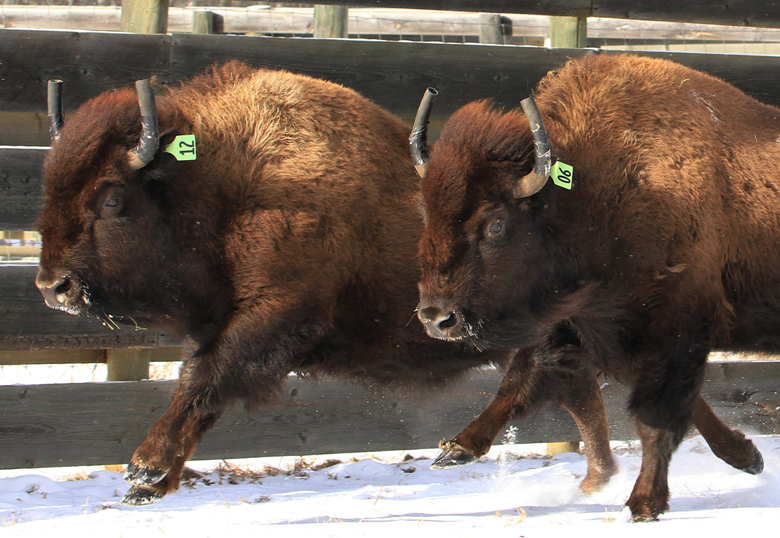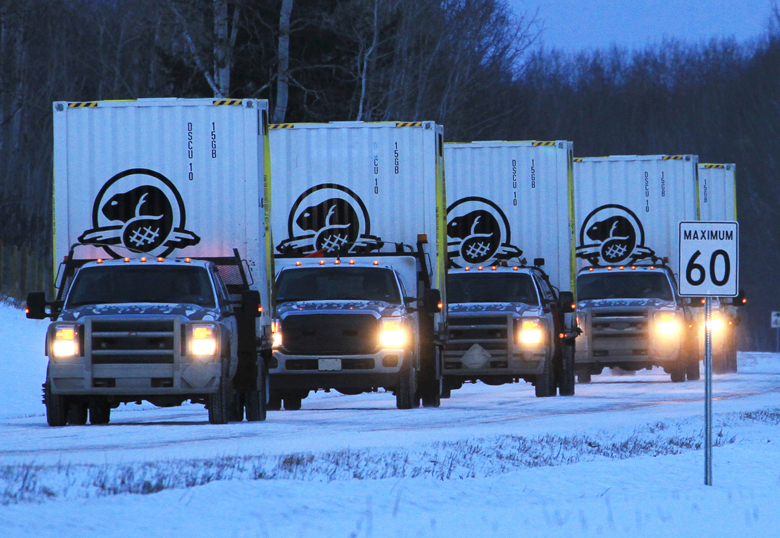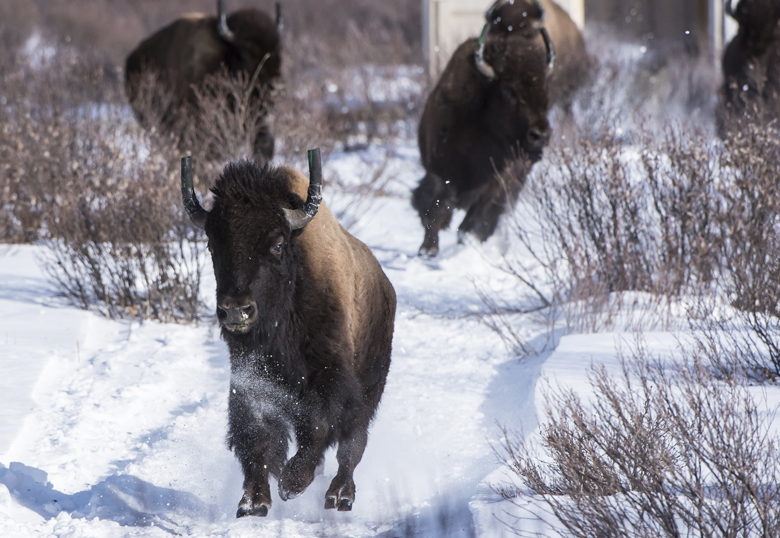The thundering hooves of buffalo are once again being heard on the plains of Banff National Park thanks to a historically collective effort, not the least of which involved the University of Lethbridge’s own Dr. Leroy Little Bear (BASc (BA) ’72, DASc ’04).

In early February, a herd of 16 bison – primarily pregnant two-year-olds – were relocated from Elk Island National Park to the Panther Valley area in Banff. Located on the remote eastern slopes of the park, the bison will initially be held in a large pasture until their young are born. As they grow and mature in the area, gradually claiming the land as their own, fences will incrementally be taken down. The hope is that eventually, the bison will be free roaming wild animals in a territory they dominated for over 10,000 years.
“The buffalo are coming back,” says Little Bear succinctly. “It’s the talk of the town amongst the native communities.”
How the buffalo were reintroduced to this area took much planning and coordination, beginning years ago with simple dialogues about the importance of the buffalo to Aboriginal culture.
“Our plains culture is very closely tied, and in many cases, based on our relationship with the buffalo,” says Little Bear. “Our youth do not see the buffalo on a daily basis and consequently make no connections, so those parts of the culture based on the buffalo are not reinforced.”
Little Bear says it was almost 13 years ago when then U of L graduate student Paulette Fox (MSc ’05) was speaking with Blood Tribe elders and conversations about the buffalo developed. They soon found they were not alone in their desire to see the buffalo re-established on traditional lands. Organizations such as the U.S. Wildlife Conservation Society, Bison Belong, the American Bison Society, the Yellowstone to Yukon Conservation Initiative (Y2Y) and numerous American and Canadian tribes were all having the same conversations.

They came together in 2014, signing a landmark accord, the Northern Tribes Buffalo Treaty, that sought to bring the buffalo back to their respective lands. Later that year, Little Bear played a major role on expanding the signatories to the treaty at a special convention in Banff.
“The treaty ended up being the course, the road to bring all these different people and organizations together,” says Little Bear.
For Parks Canada, the collective proved to be an invaluable resource and the guiding hand they sought in finalizing their bison reintroduction plan.
“This isn’t the easiest of tasks and when the idea first got circulated, there were many people who thought it was very interesting but there were also a lot of questions,” says Parks Canada Chief Executive Officer, Daniel Watson. “Leroy was really instrumental in helping to bring together a community of people who would be able to ask and answer those questions and he was a critical figure in bringing together the Buffalo Treaty – which was a crucial element to this.”
From Parks Canada’s perspective, it was imperative the Indigenous community play a role in the execution of the plan.
“What Dr. Little Bear and others made sure we kept in mind at all times was the critical importance to Indigenous peoples of the bison and the impact on their culture, both historically and in terms of specific ecological aspects. It was very much a holistic approach to this entire project that he brought to us in a very easy and natural way,” says Watson.

Little Bear, who has been to the Panther Creek area and describes it as “fantastic”, says tribe elders were involved in blessing the park and the grounds for the return of the buffalo and that further projects are in the works. One of the key legacies of this project is the relationship established between the many participating groups, right across North America.
“The treaty uses the buffalo as the centrepiece, the portal to work together on a number of issues, such as conservation, education, economics, the environment and research. The treaty calls for the tribes to work together in all those areas,” says Little Bear. “When we first started talking about this, we thought we were lone voices but once that network was established and the web of organizations started to come together, we made friends across the continent.”
The Parks Canada mandate specifically notes its responsibility as guardian of Canada’s cultural and natural heritage. This project goes to the heart of that promise.
“Entire cultures depended on these animals for millennia and, over time, that relationship got severed when the bison disappeared,” says Watson. “To be able to bring a keystone species back in a way that is in full recognition of the significance of not just the species’ presence in the area but also the interaction between First Nations and Métis people with the bison is something that is at the very core of our mandate and something that is really important to us.”
